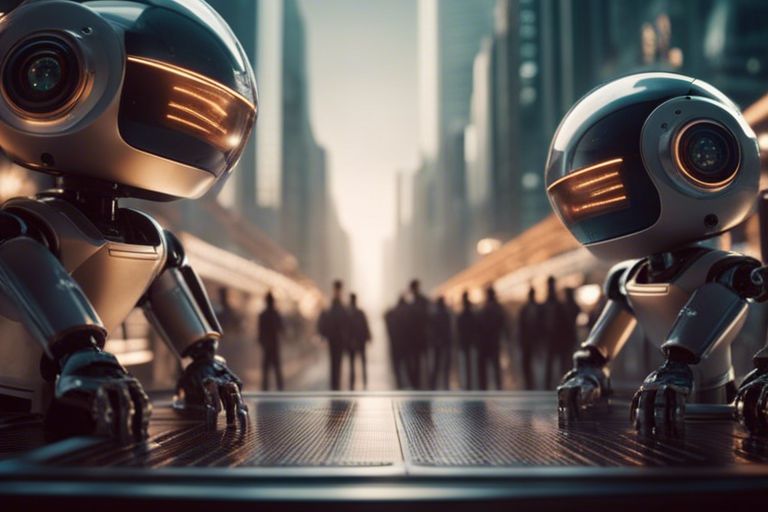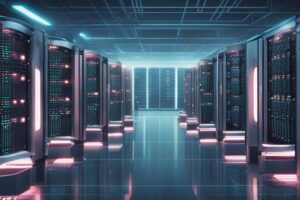Most industries today are undergoing a significant transformation due to the rapid advancements in automation technology. From artificial intelligence and robotics to machine learning and algorithms, automation is reshaping the landscape of traditional jobs and workforce dynamics. In this blog post, we will explore the various impacts of automation on the future of workforce, including the opportunities, challenges, and adaptations required to thrive in this new era of work.
Understanding Automation
Definition and Types of Automation
On the topic of automation, it is crucial to first understand what it encompasses and the various types it can take. Automation refers to the use of technology to perform tasks with reduced human intervention. There are several types of automation, including fixed automation, programmable automation, and flexible automation. Each type offers different levels of adaptability and complexity in the tasks it can handle.
| Types of Automation | Description |
|---|---|
| Fixed automation | Tasks are performed by machinery set up in a fixed sequence. |
| Programmable automation | Allows for customization of tasks through programming. |
| Flexible automation | Capable of adapting to changes in the production process. |
| Robotic Process Automation (RPA) | Uses software robots to automate repetitive tasks in software systems. |
| Cognitive automation | Utilizes artificial intelligence to automate complex decision-making processes. |
Though automation has the potential to enhance efficiency and productivity in various industries, it also raises concerns about the displacement of human workers and the need for upskilling to adapt to the changing workforce demands.
Historical Development of Automation Technologies
One significant aspect to consider when delving into automation is its historical development over the years. Automation technologies have evolved from simple mechanical devices to sophisticated software-driven systems. The progression can be traced back to the Industrial Revolution, where the use of steam power mechanized many manual tasks. Subsequent advancements in technology brought about the development of automated assembly lines and computer-controlled systems, paving the way for the modern era of automation we witness today.
Automation has played a pivotal role in shaping the trajectory of industrial and technological advancements, revolutionizing the way tasks are executed and revolutionizing the workforce landscape. As automation technologies continue to evolve, it is imperative for individuals and organizations to adapt and embrace these changes to stay competitive in the ever-evolving domain of work.
Automation and Employment
Job Displacement Concerns
Even as automation drives efficiency and productivity in many industries, there are valid concerns about the impact it will have on employment. The fear of job displacement looms large as roles that were once performed by humans are now being automated.
Job Creation Potential
Concerns about job displacement are legitimate, but it’s necessary to also consider the potential for job creation that automation brings. While some jobs may be lost, new opportunities will emerge as businesses adapt to the changing landscape.
Creation of new roles centered around managing and maintaining automation systems, developing new technology, and providing personalized services that require a human touch are just a few examples of how automation can lead to job creation.
Skills and Education in an Automated Era
The Changing Skillset Demand
All industries are experiencing a transformation in skillset demand due to automation. With the rise of artificial intelligence and robotics, repetitive and mundane tasks are being automated, leading to a shift in required skills in the workforce. Employers now seek employees who possess a combination of technical expertise, problem-solving abilities, creativity, and adaptability to thrive in a rapidly changing environment.
The Role of Education and Lifelong Learning
On the forefront of adapting to this automated era is the crucial role of education and lifelong learning. To meet the changing demands of the job market, educational institutions must equip students with not only technical skills but also soft skills such as critical thinking, communication, and collaboration. Moreover, individuals must embrace lifelong learning to continuously upskill and reskill themselves to stay relevant and competitive in the workforce.
Understanding: Lifelong learning is no longer a choice but a necessity in the era of automation. The ability to adapt, learn new skills, and apply them in different contexts will be important for individuals to navigate the evolving landscape of work effectively. Embracing a growth mindset and being proactive in seeking opportunities for learning and self-improvement will be key in ensuring success and employability in the automated future.
Adapting to the New Work Landscape
Government and Policy Responses
Many governments around the world are grappling with the challenges posed by automation in the workforce. It is imperative for policymakers to proactively address the implications of widespread automation on job displacement and skills gaps. Governments need to invest in education and training programs to reskill and upskill workers for the jobs of the future. Additionally, they must create policies that encourage innovation and entrepreneurship to spur economic growth in the face of automation.
Business Strategies for Workforce Transformation
Any successful business must adapt to the changing landscape brought about by automation. Organizations need to embrace digital transformation and invest in technologies that enhance productivity and efficiency. This includes implementing artificial intelligence, machine learning, and automation tools to streamline processes and empower employees to focus on more strategic, value-added tasks. By prioritizing workforce reskilling and investing in continuous learning opportunities, businesses can ensure they remain competitive in a digitally-driven world.
Policy responses to the challenges posed by automation in the workforce are crucial for shaping the future of work. Governments must work closely with industry leaders, education providers, and other stakeholders to develop comprehensive strategies that promote innovation, protect workers’ rights, and ensure a smooth transition to a more automated work environment. By fostering a supportive ecosystem that encourages collaboration and adaptation, policymakers can help mitigate the negative impacts of automation on the workforce and pave the way for a more sustainable future.
The Ethical and Social Considerations
Impact on Inequality and Economic Distribution
To address the impact of automation on inequality and economic distribution, it is imperative to consider how automation may exacerbate existing disparities. While automation can lead to increased efficiency and productivity, it also has the potential to displace workers in certain sectors, particularly those with lower skill levels. This displacement could widen the gap between the wealthy and the less affluent, leading to social unrest and economic instability.
Work-Life Balance in the Age of Automation
On the topic of work-life balance in the age of automation, it is crucial to analyze how technology can both enhance and disrupt the balance between work and personal life. Automation has the potential to streamline tasks and increase productivity, allowing workers to potentially achieve a better work-life balance. However, the pressure to constantly be available and the blurred boundaries between work and personal life in a digital age can also lead to burnout and negative impacts on mental health.
Automation has the potential to revolutionize the way we work, but it is imperative to carefully consider and address the ethical and social implications that come with this transformation. By proactively addressing issues such as inequality, economic distribution, and work-life balance, we can strive to create a future workforce that is not only efficient and productive but also ethical and sustainable.
Final Words
Considering all points, it is evident that automation will significantly impact the future of the workforce. While it offers opportunities for increased efficiency and innovation, it also poses challenges such as job displacement and the need for upskilling. Organizations and individuals must adapt to this changing landscape by embracing new technologies and acquiring relevant skills. Collaborative efforts between governments, businesses, and educational institutions are important to ensure a smooth transition and to mitigate the negative consequences of automation on the workforce. By being proactive and strategic in response to these changes, we can harness the potential benefits of automation while also supporting and empowering the workforce to thrive in the future.



